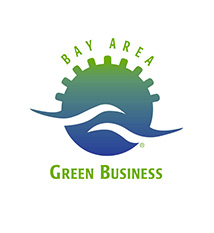Legal Update: Generic Top-Level Domain Names Draw Near
By Hoge Fenton | 02.16.2011 | Firm Post
After an initial flurry of activity a few years ago, 2012 finally may be the year new Generic Top-Level Domain Names (gTLDs) come to a web browser near you. Initially approved by ICANN (the Internet Corporation for Assigned Names and Numbers) in 2008, the application period for new gTLDs is now scheduled to begin in May 2011 — though experts familiar with the process say it could be delayed until later in 2011.
With the application period set to open in as little as three months, the time for planning is now. Any company that monitors or protects use of its brands or trademarks on the Internet should be aware of this issue and should consider strategic planning. Whether a company’s strategy may include applying for a new gTLD, monitoring gTLD applications submitted to ICANN for possible objection, combating cybersquatting with arbitration or other remedies after domain names are registered, or some combination of the three, a company should carefully plan its strategy and ensure that it supports the company’s business priorities.
TLDs are the portions of domain names to the “right of the dot,” such as “.com” and “.net.” Currently there are 269 TLDs in use, including 21 gTLDs such as “.com” and 268 country code TLDs such as “.us.” Under ICANN’s new gTLD program, corporations, organizations, and institutions will be able to register common words or their own brands or trademarks as gTLDs, such as “.sports” or “.toyota.” Depending on demand, hundreds or even thousands of new gTLDs could be introduced to the Internet within the next few years as a result of this program.
Intense debate about ICANN’s plan has taken place since the initial announcement in 2008. ICANN contends new gTLDs will create more competition and innovation on the Internet. Many brand owners counter that it will only encourage more cybersquatting by offering dozens of new combinations through which cybersquatters can infringe trademarks, and by making it exponentially more difficult to police trademark infringement on the Internet. Whatever the merits of this debate, it is now clear that ICANN is intent on moving forward, and that new gTLDs will soon arrive.
ICANN is still negotiating with many different stakeholders over the details of the proposal. The current plan is for new gTLD applications to cost $185,000 and to be due within 45-60 days of the beginning of the application period. Later rounds of applications are expected, though ICANN has not said when that may be. Applications will be publicly posted to allow public comment and to provide brand owners or other interested parties an opportunity to object to a new gTLD. Those objecting will have only a limited time to do so, and may object only on specified grounds, so companies planning to monitor and potentially object to new gTLD applications should be prepared when the application period opens. Depending on whether any disputes must be resolved, ICANN estimates the time between application and introduction of a new gTLD could range from 8 to 19 months. If there are no further delays in the process (which many believe there will be), this means new gTLDs could reach the Internet by early 2012.
For more information regarding this or any other intellectual property related matter, please contact a member of our Intellectual Property practice.
This Legal Update is provided as an educational service by Hoge Fenton for clients and friends of the firm. This communiqué is an overview only, and should not be construed as legal advice or advice to take any specific action.












